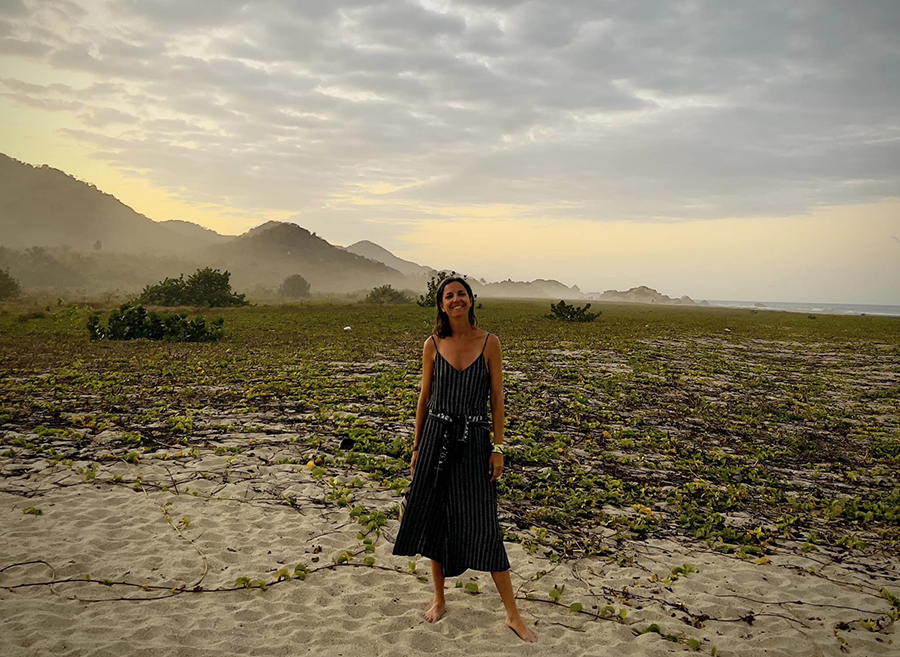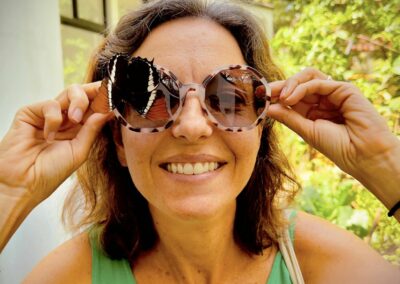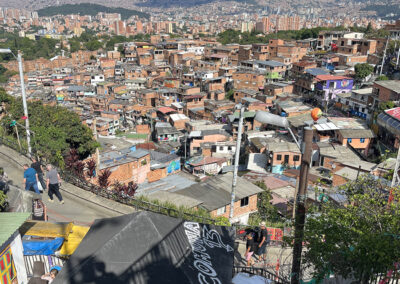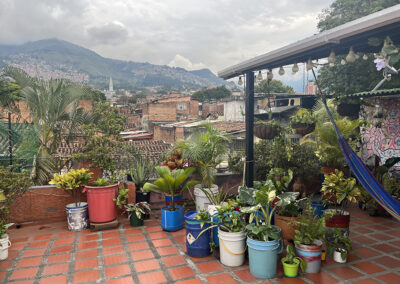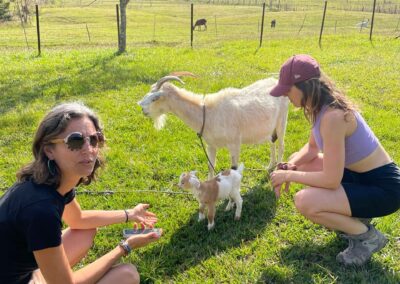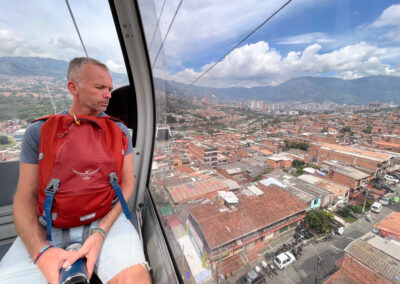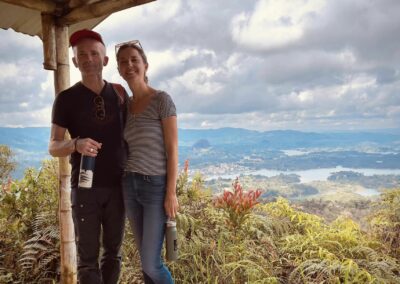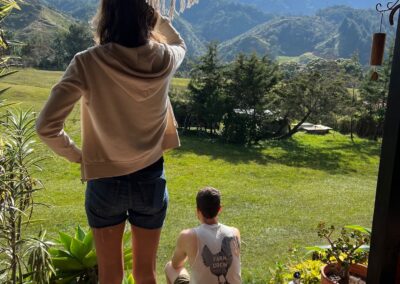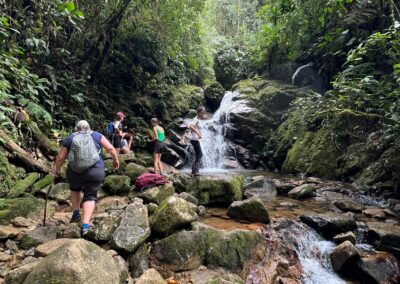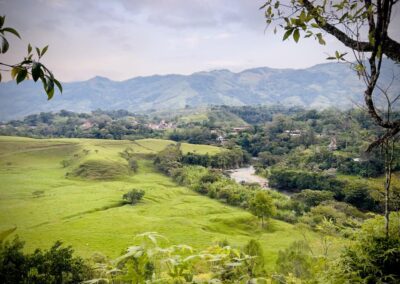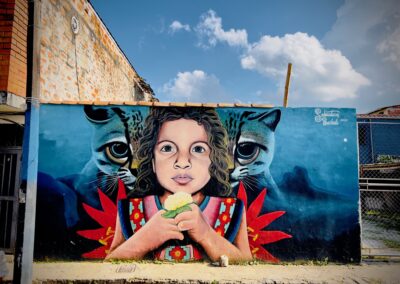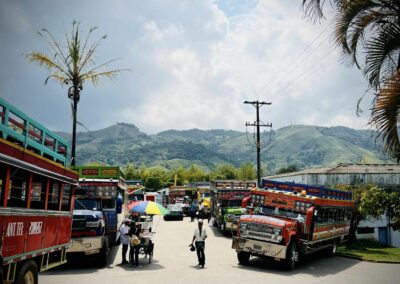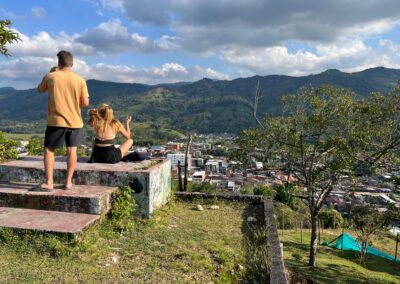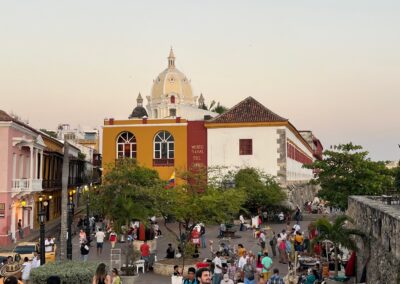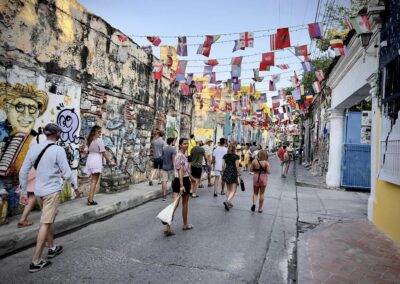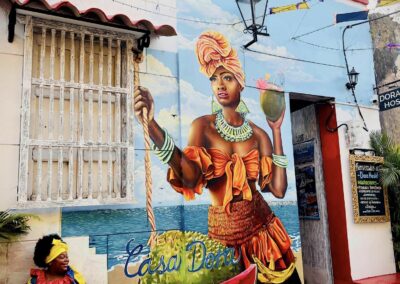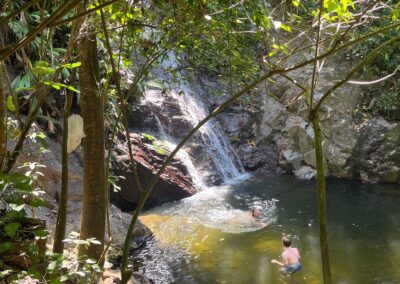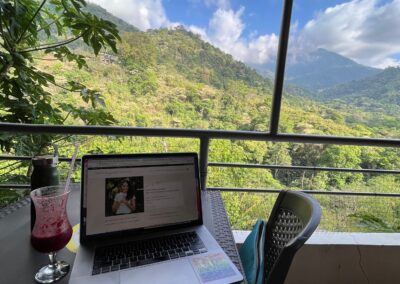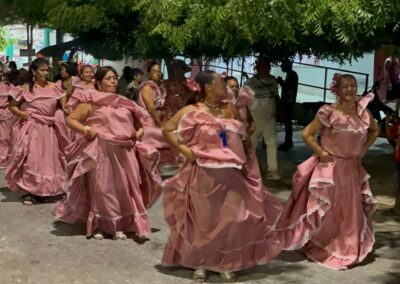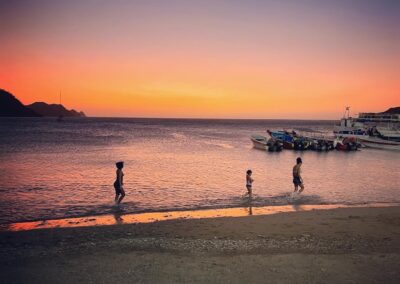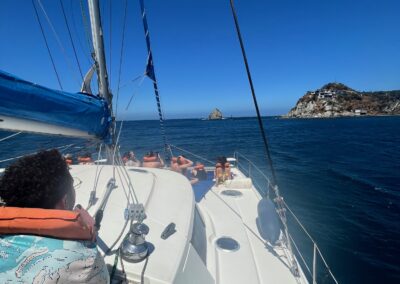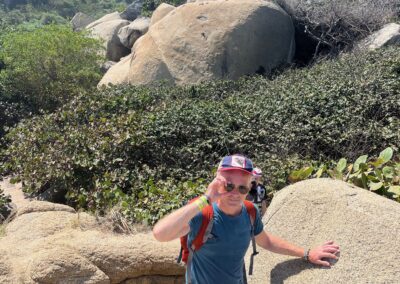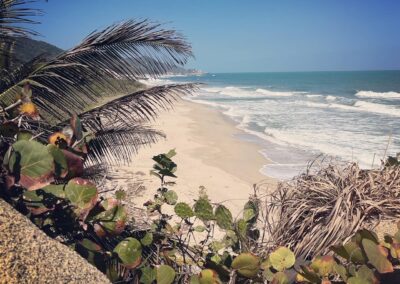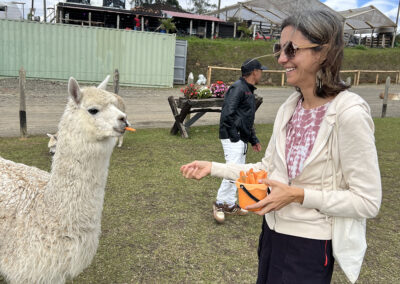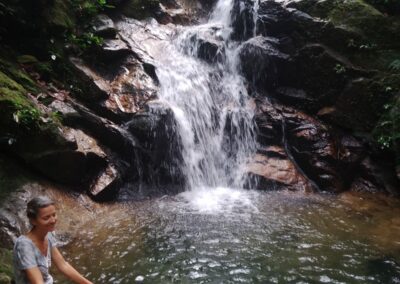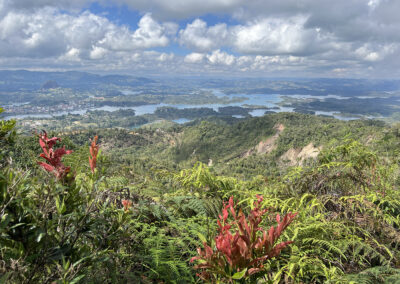We started in Medellin, a city that I have heard much about from the “digital nomad” community. There, especially in the trendy Poblado neighborhood, you can find hoards of international digital workers, making a temporary or permanent home in “the city of eternal spring” – mainly to enjoy the weather and the low cost of living. We spent some time in Poblado but it felt a little inauthentic to me, so we ventured to other neighborhoods and stayed in 2 in particular- Prado, in the north part of the city, which is generally not on the tourist or digital nomad radar, and Laureles, which was a nice mix of travelers, international people, and locals. I can see why Medellin is a good “base” from which to explore the country, and to work in if you need to be online. But as with most cities, there are huge disparities and wandering from neighborhood to neighborhood, we saw a wide swath of humanity, which was at times humbling, and a reminder of our immense privilege.
In Medellin, we got a taste of the local flora and fauna- from the Jardin Botanico, to Parque Arvi high above the city. . . After a few weeks in the city, though, I wanted more nature! So we headed east into the countryside for a few weeks, including 1 week in a very charming town called San Carlos. In San Carlos there is a Spanish language school that also provides daily “adventures” for the students. Every day we would have class in the morning, and do something outdoors in the afternoon- usually a hike, or a swim in the river. . . At the end of the week we went canyoning in the nearby river- an amazing day involving hiking, repelling down waterfalls, swimming and jumping off cliffs into the river. We were sad to leave San Carlos, but knew at that point that we were going to return to this area a few weeks later to take care of the farm, so we headed north to explore a different region of Colombia.
We flew into the coastal city of Cartagena- by far the most popular tourist destination in Colombia. I was intrigued by the colonial history and the Caribbean culture that still thrives there. It is a beautiful city, with amazing old architecture and colorful, warm people. But it is also swarming with tourists, which felt pretty overwhelming after being in rural central Colombia. We spent 6 nights in Cartagena, staying in the artistic and historic neighborhood of Getsemani and by the time we left I was once again craving nature, space and tranquility. We took a bus from Cartagena to another large coastal city, Santa Marta, and there we took a 45 min taxi ride to the mountain town of Minca. It’s amazing to me how much the scenery can change here in only 20 miles! Santa Marta was very dry and hot, with barren hills covered in cacti with the ocean as a backdrop. Past the dry hills, though, you find larger mountains, and within those mountains lie flush, tropical, green valleys. The tiny town of Minca has become an epicenter for backpackers- even though the town is really only a few intersections with restaurants and shops, the outlying area is littered with hostels and hotels. But it’s all very low-key and eco-conscious, which we really liked. Our hotel/ hostel was about a 30 min walk from the center of Minca, positioned right next to a gorgeous river that ran into the town. During this week, I wasn’t able to work much- not surprisingly, our remote hotel had a very spotty wifi connection. But a couple of days I walked to a nearby restaurant with a better signal, to stay caught up. Honestly, though, the mix of working and then taking off large chunks of time to immerse myself in nature and a new culture has been really amazing and rejuvenating.
Santa Marta is a great base from which to explore this amazingly diverse region of Colombia. We passed through it several times, going to the beach town of Taganga and then to Tayrona National Park. We accessed the park from 2 sides- the first day we took a charter sailboat tour to one of the remote beaches. The ride there was VERY rough and choppy, but when we arrived at the little cove with the beach it was tranquil and gorgeous. A couple days later, we went to the main entrance of the park and did the 6 mile hike that most visitors do, through the jungle and along the coastline. We camped at one of the park’s main campsites and really enjoyed the incredible scenery there. This park has been inhabited by indigenous people for hundreds of years, and many still make their home in the mountainous region of the park. Supposedly they have a contract with the Colombian government that says they must be consulted on any construction, mining, tourism, or other changes made to the landscape of the area. . . from what I hear (not surprisingly) that contract has not always been honored.
We’ll wrap up our 5+ months in Latin America here in Colombia (we started in Guatemala, then Mexico) in a few weeks. As always, I have mixed feelings about going back to the US, and I know it will be a shock at first. But I love this “semi-nomadic” lifestyle we’ve cultivated, and it’s all possible because of the flexibility that I’ve built into my business. If you’re craving a lifestyle change, but know that you need to build an online business to support it, I’d love to hear from you! I coach entrepreneurs to build and grow their online business so that it aligns with and supports their ideal lifestyle.

